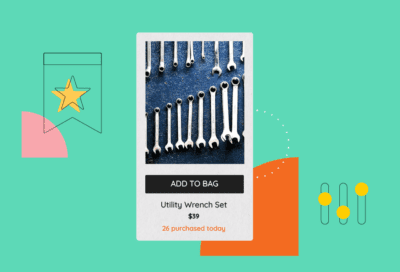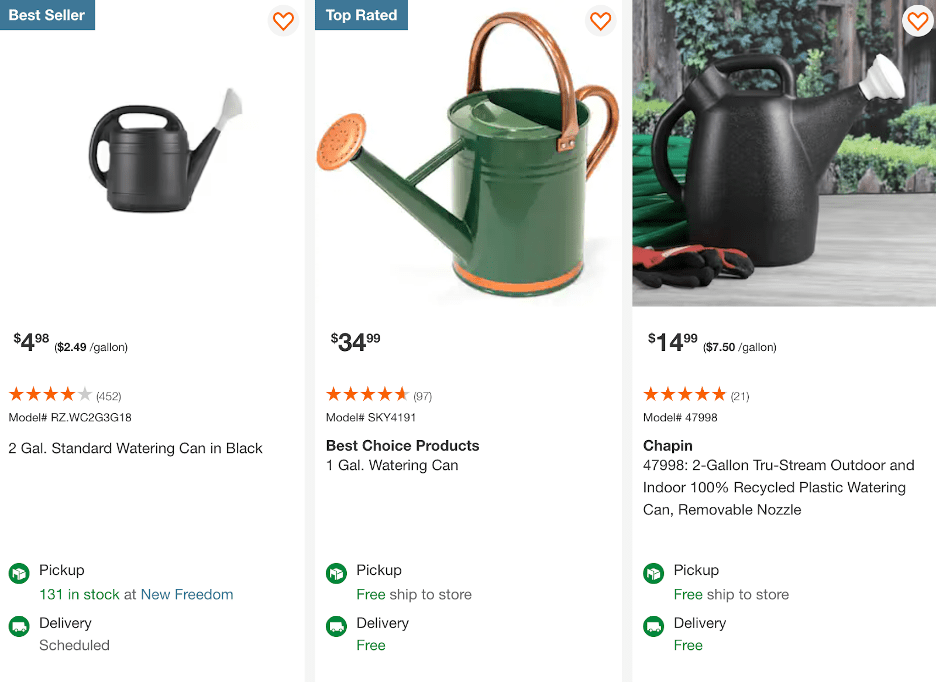
Tap Into the Value of Social Proof Marketing
It’s time to make social proof marketing part of your wider programming.
After all, social proof is wired into our everyday lives. And it’s also a growing element of online commerce. According to research from TINT, 75% of consumers search for reviews and testimonials before making a purchase. Therefore, when it comes to omnichannel marketing, sprinkling in a dose of social proof throughout the customer journey can help increase performance and increase trust.
What is Social Proof Marketing?
You can think of using social proof marketing as offering the “wisdom of the crowd” on key touchpoints in the customer journey. It’s a special kind of personalization driven by real customer behavior as a catalyst to either confirm a purchase decision or entice someone to see what all the hype is about.

How to Use Social Proof Marketing
Incorporating social proof on your website is easier than you think. Here are five examples of how you can introduce social proof marketing into your upcoming personalization strategy.
Example 1 – Highlight Popular Products
For retailers with seasonal goods or a broad selection of products, highlighting which items are most popular can help visitors narrow their choices and feel more confident in their purchase. One way people glean this information for themselves today is by looking not only at how highly a product is rated, but also how many people rated it.
If something is both highly rated and rated by a lot of people, that carries a lot more weight.
You can add that same level of insight to your own pages with a content feature that highlights the most popular items at nearly any level. For example, share the trending items of the day on the home page. Or personalize based on recent searches and narrow the products you highlight based on a specific category of items like backpacks.
Helly Hansen uses personalized templates to highlight clothing that’s popular in specific segments such as ‘men’s,’ ‘women’s,’ ‘sailing’ and ‘skiing.’ These product recommendations paired with language that creates a bit of FOMO can go a long way to driving engagement. For example, adding “don’t miss out on these hot sellers” can make a personalized product recommendation element even more successful.
Example 2 – Trending Searches
A search engine provides fill in the blanks that are personalized based on a huge variety of inputs from past searches to what other people clicked on when they searched. On your own site, you can take from this logic with onsite search results that highlight the most popular choices—within or next to your results. For example, if someone searches for hiking boots, provide information on the results page about the top selling boots by category to help them get to a product page that they feel confident about that much more quickly.
Search for “watering can” on the Home Depot website, and the first result you see is labeled as a best seller. You can go one step better by adding a feature on the side that refines a search by other “popular styles.” For example, if someone searches for “athletic pants,” you might feature the top three pants styles that didn’t pop up in the results, but are also relevant based on past search behavior.

Example 3 – Insider Deals
A typical element to getting people to sign up for newsletters and loyalty programs, special deals and early sales can also be used in personalized campaigns outside of these groups. Terms like “see what all the excitement is about” can entice people to click through and browse.
Here is where A/B testing and data can go a long way to delivering more bang for your buck. While these might be tried and true methods, using AB testing tools to constantly tweak and improve a promotional element on the home page, app or in email can significantly increase the value.
Use data and testing to deliver a few personalized product preview images along with your messaging. Then personalize the landing page and test what works—sharing the top sellers at the top or what’s newest, or both.
Example 4 – Countdown Timers
To amp up the excitement even more, consider adding elements like personalized countdown timers in emails and on marketing promos. For example, run a campaign that counts down to when the new spring collection is for sale, or when a big sale is happening.
Retailers often combine countdown timers with a scratch-off game in order to personalize their email campaigns. People “scratch” their offer to see what personalized savings they got and then were reminded to redeem it with a personalized timer.
Example 5 – Omnichannel FOMO
Not everyone is traveling or even going into stores, and so hinting at what’s happening in stores, or in a specific city can be particularly interesting to people right now. Share what’s hot in L.A. with your east coast customers, or highlight top products in the United Kingdom to customers in other countries. Similarly, share products that sold out over the holidays that are back in stock. Or which products are flying off the shelves of a cool pop-up shop.
Swimwear brand Salt Swim, and many other D2C retailers, use this tactic extremely well on Instagram and other social channels, sharing which products are back in stock or selling well with different groups. Not only does this offer a bit of FOMO, but it can be personalized in really creative ways: delivering new insights that people might not find themselves.
Make sure your personalization tools have social proof options
With with the right personalization platform you can test, personalize, recommend, and deliver social proof marketing that’s optimized to your customer journeys. Some key features you want to make sure your personalization tool includes are:
Segmented Experiences
Easily test and deliver different content and social proof messaging to custom, or automated groups of all sizes, no coding skills required. Upload your own data or utilize over 150 Out-Of-The-Box targets including: browser/device type, source, time, geography, weather, browsing data, and more.
Testing and Experimenting
Easily test creative, recommendations, Social Proof messaging, UI changes and more by running controlled experiments between different variants using statistical analysis to determine which variation performs better on either out-of-the-box or custom site performance metrics.
Analytics and Insights
Have access to comprehensive analytics for all experiences, detailing statistical significance, impact to both out-of-the-box and custom metrics, and next best action, updated in real time.
Easy to Test and Personalize
Use Monetate’s powerful testing and personalization capabilities alongside Social Proof actions to validate decisions, optimize lift, and lean on AI to deliver hyper-relevant customer experiences.
Fully Customizable
Business users can easily modify the look and feel, and placement of messages to stay in keeping with your brand guidelines. Alongside styling control, you have the flexibility to choose different look-back periods and a number of different social proof strategies.
Consider How Social Proof, Part of Monetate Personalization, Can Help
Social Proof, a native Monetate feature, combines Certona’s patented algorithms, covering the indexing of search based on behavioral outcomes rather than just text analysis, with Monetate’s easy-to-use, powerful testing and personalization platform. As a feature within Monetate , you can customize your Social Proof actions, leverage in-session and historical data, and also test and personalize accordingly.
For Monetate’s client Toolstation, social proof yielded a 30x ROI from highlighting popularity messaging on its PDPs. Social Proof also resulted in +2.2% increase in conversions and a +5% uplift in email driven sales.